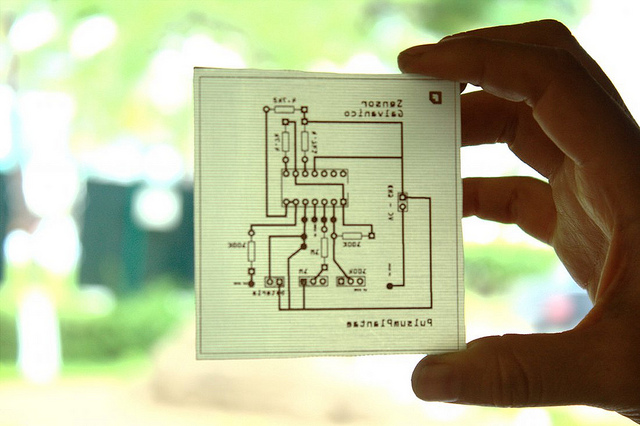Pulsu(m) Plantae _ project presentation from LessNullVoid on Vimeo.
You may have seen a plant used as a musical instrument before, by measuring capacitance across the leafy life form and turning it into a touch sensor. This is something different: it’s letting the plant itself express communication through sound, using biofeedback to turn the living systems on the plant into something audible.
It is a synth jam, made by a plant, that tells you something about what the plant is sensing about the world around it.
From Tijuana, México, media artist and musician Leslie Garcia shares the latest iteration of her open hardware project, which builds on readily-accessible, open platforms to make a tool for learning and experimentation anyone might use. (A standalone version works with our own open source synth, MeeBlip; here, she’s using Pure Data. Both work with Arduino.)

Images courtesy the artist.
If you’re comfortable with Spanish, check out the project site. She’s also written a statement for us in English.
Pulsu (m Plantae is a project that empirically analyzes which are the mechanisms that plants use to communicate and also how their own biological processes are a manifestation of communication, seemingly intangible to our senses.
The project involves the design of an audible prosthesis, based on the biofeedback principle, a technique that focuses on obtaining various physiological functions data of an organic body, using instruments to obtain information of the cycles and operation of these living systems. The prostheses * transduce biofeedback obtained readings in a sound synthesis process, thereby producing an abstract voice for plants.
The patterns obtained from studying various specimens of plants serve as a designing basis to create a coded communication sound system. The aesthetic design of Pulsu (m) Plantae is based on the chaosmosis idea coined by the Italian philosopher Felix Guatarri, who proposes aesthetic subjectivity as a generating referential links method. Pulsu (m) Plantae provides a series of interactive experiences where technology application offers subjects tools to enhance their ability to perceive the environment.
The project aims to analyze the intangible processes of communication between biotic element networks, amplifying electrical signals that serve as transmission channels among the rich varieties of specimens that institute plantae kingdom.
http://lessnullvoid.cc/pulsum


If you’re near México, in April, you can catch a workshop and installation version of the project in Oaxaca, for the Proyecta Festival.
Workshop call: http://proyecta.cdo.gob.mx/talleres
Based on the same circuit, she says the new version will use creative coding environment Processing to build a “bio-mapping,” representing the process of photosynthesis at the cellular level.
Images: http://lessnullvoid.cc/pulsum/2013/02/en-proceso-colaboracion-con-el-jardin-etnobotanico-de-oax/
More on that festival, which also includes our friend ANTIVJ: http://proyecta.cdo.gob.mx/
And some of the resulting sounds, plus an earlier documentation video that steps through some more of the process:
Pulsu(m) Plantae from LessNullVoid on Vimeo.